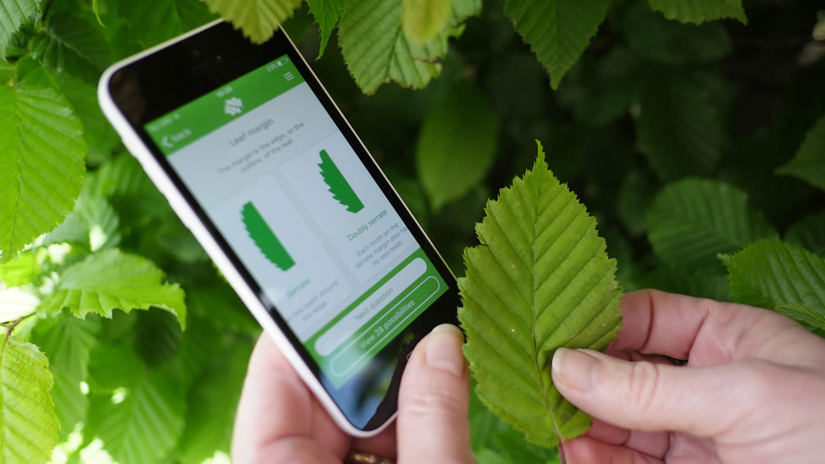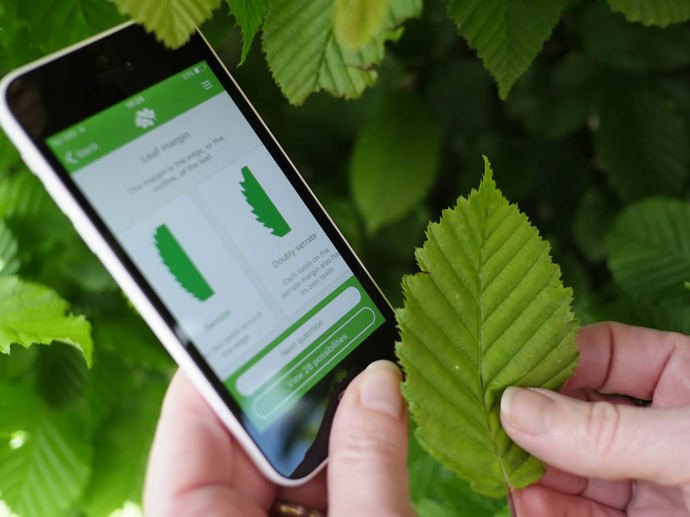Common name: black poplar
Scientific name: Populus nigra subsp. betulifolia
Family: Salicaceae
Origin: native
Imposing, elegant, rare. The black poplar was once a staple of Britain’s landscape but these days, the trees are few and far between.
Common name: black poplar
Scientific name: Populus nigra subsp. betulifolia
Family: Salicaceae
Origin: native
Mature trees grow to 30m and can live for 200 years. The bark is dark brown but often appears black, and is thick with numerous fissures and burrs. Twigs are lumpy and brown in colour.
Look out for: the leaves which have a faint scent of balsam.
Identified in winter by: its knobbly twigs, especially on older trees. Buds spiral round the twig and are closely pressed to it.

Credit: FloralImages / Alamy Stock Photo
Shiny, green and heart-shaped, with long tips and a mild scent of balsam. Young leaves are covered in fine, tiny hairs, which they shed by autumn.

Credit: FloralImages / Alamy Stock Photo
Black poplar is dioecious, meaning male and female flowers are found on separate trees. Flowers are catkins (male catkins are red and female catkins are yellow-green), and are pollinated by the wind.

Credit: Mauritius Images GmbH / Alamy Stock Photo
Once fertilised, female catkins develop into fluffy cotton-like seeds, which fall in late summer.
White poplar (Populus alba) which has rounded leaves compared to the black poplar’s more triangular leaves.


Download our free Tree ID app for Android and iPhone to identify the UK's native and non-native trees. It's an A-Z tree guide in your pocket.
Black poplar is native to north-west Europe. A declining species in the UK, it is rare and grows in isolation. It is most prevalent in Shropshire, Cheshire, Somerset and East Anglia and grows best in boggy conditions, near ditches and floodplains.
Only around 7,000 wild black poplars now grow in Britain and of these, only 600 are female trees.
Black poplar is the food plant for the caterpillars of many moths, including the hornet, wood leopard, poplar hawk and figure of eight. The catkins provide an early source of pollen and nectar for bees and other insects, and the seeds are eaten by birds.

According to Greek mythology, the black poplar was created after Phaeton’s fatal attempt to drive Apollo’s chariot. Phaeton's sisters made such a fuss mourning his death that the gods transformed them into black poplars. It is also said that fallen red male catkins are Devil's fingers, and bring bad luck if picked up.
Black poplar wood is fine textured, soft and almost white in colour. It is naturally springy and resistant to shock. Traditional uses included cart wheels and wagon bottoms. Because of its natural fire resistance it was often used for floorboards, especially in the days of paraffin lamps. Black poplar can be coppiced or pollarded and was therefore a popular source for thatching spars, bean sticks, clothes pegs and woven fruit baskets. Today, hybrid black poplar timber is used to make artificial limbs, wine cases, pallets, shelving, bowls and toys.

According to the Forestry Commission, black poplar is the most endangered native timber tree in Britain. In fact, there are so few wild black poplars left that it is unlikely they will pollinate each other. Instead, the large numbers of cultivated trees pollinate them resulting in no regeneration of true, wild black poplars. In addition, poplar species are prone to a variety of fungal diseases including cankers, leaf rusts and poplar scab.